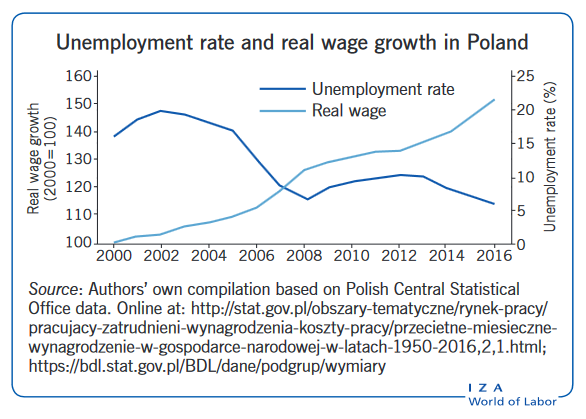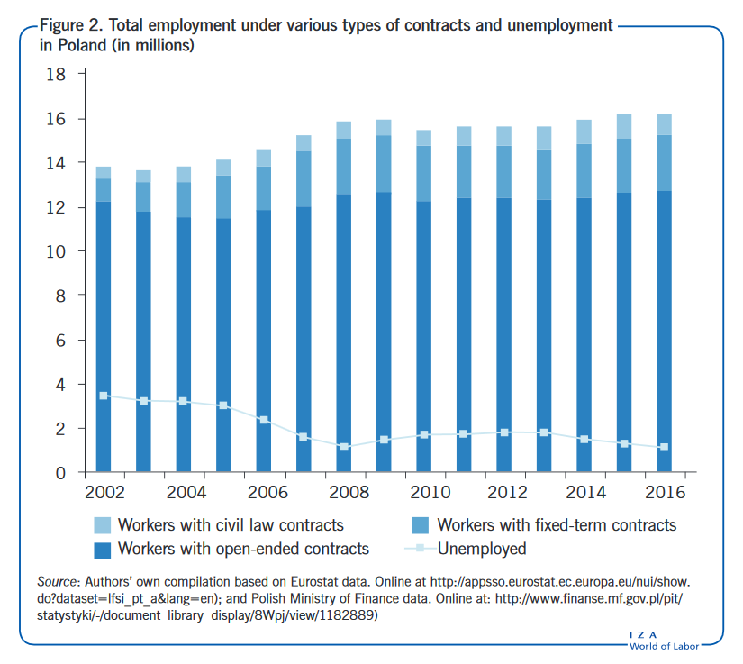In the early 2000s, Poland’s unemployment rate reached 20%. That is now a distant memory, as employment has increased noticeably and the unemployment rate has dropped to 5%. However, most of the net job creation has consisted of temporary jobs. Labour market segmentation has become an issue and an important factor behind wage inequality. Labour force participation of older workers increased after reforms aimed at prolonging careers, but the recent reversal of the statutory retirement age leaves Poland even more vulnerable to the effects of population ageing.
In new IZA World of Labor article Piotr Lewandowski and Iga Magda describe unemployment and employment developments, labour force participation patterns, real wage changes, earnings inequality and gender gaps.
The entire article can be found here → link
Please cite as: Lewandowski, P., Magda, I. The labor market in Poland, 2000−2016. IZA World of Labor 2018: 426 doi: 10.15185/izawol.426
Real wages increased by 54% between 2000 and 2016 , while the unemployment rate declined
noticeably over the same period

Temporary employment has more than doubled since 2000


